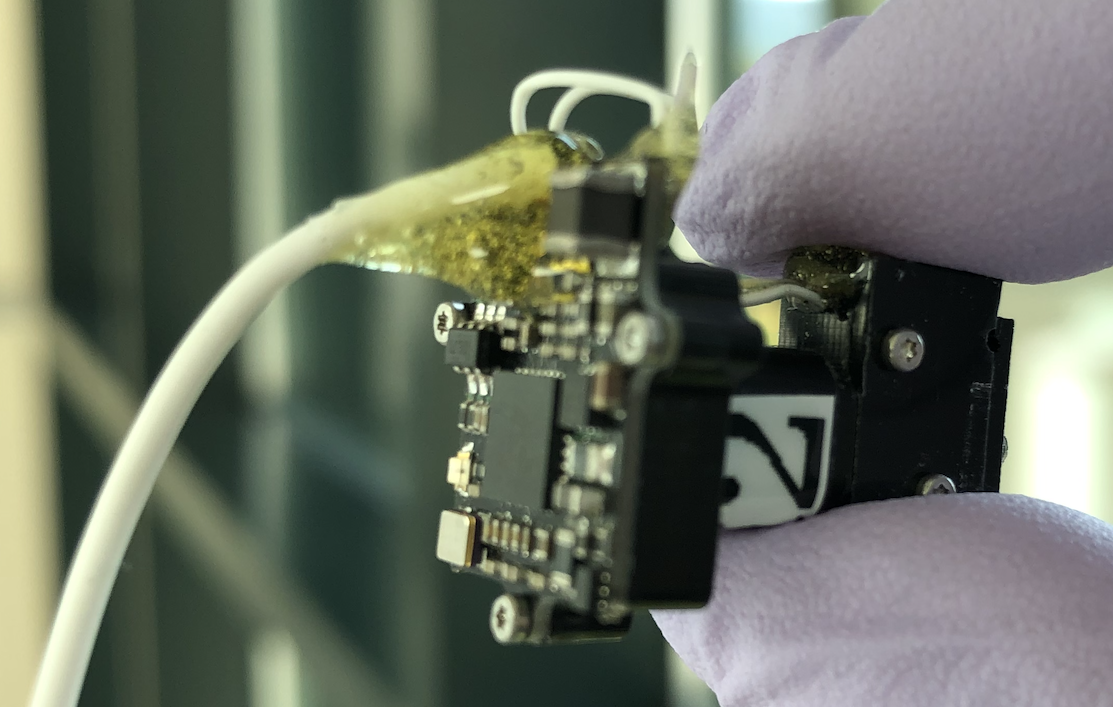To monitor the activity of specific cells during unrestricted behavior, we use open-source head-mounted miniscopes developed at UCLA (miniscope.org) to measure calcium activity. The main advantage of this approach over head-fixed 2-photon imaging is the ability to perform a broader range of behavioral tasks including artificial intelligence-based behavioral analysis. Combining these cell type-specific recordings with unbiased sub-second behavioral analysis using AI facilitates the characterization of the cellular underpinnings of behavior at a resolution not possible with conventional approaches.
